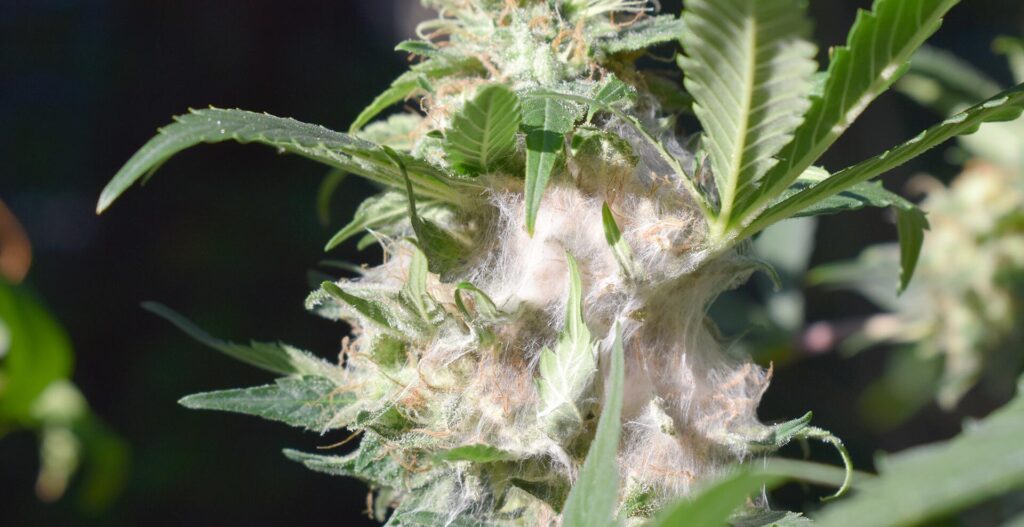Bud rot, scientifically known as Botrytis cinerea, is a formidable fungal disease that wreaks havoc on cannabis crops, particularly during the critical flowering stage. This insidious pathogen can decimate entire harvests if not identified and managed promptly. Understanding its signs, causes, and prevention strategies is essential for both novice and experienced growers aiming to safeguard their plants.
Understanding the Signs and Symptoms of Bud Rot
Bud rot is notoriously difficult to detect in its early stages because the infection begins inside the plant. Initially, the fungus targets the stem, which becomes mushy and discolored—often a grayish hue. As the infection progresses, the surrounding leaves may turn yellow, brown, or appear burnt. These symptoms can sometimes be mistaken for nutrient deficiencies or other plant stress factors, making early identification challenging.
As the disease advances, the buds themselves begin to rot. This is characterized by a brown, mushy texture, and the appearance of gray or white fluffy mold on the surface. In severe cases, entire buds can collapse, leaving behind a slimy, decomposing mass. The fungus also produces spores, which are easily dispersed by wind, water, or even on the clothing and tools of growers, leading to rapid spread if not controlled.
Causes of Bud Rot: The Environmental Culprits
The primary driver of bud rot is excessive moisture. High humidity levels, especially above 90%, create an ideal breeding ground for Botrytis cinerea. This fungus thrives in environments where water condenses on plant surfaces, such as during early morning dew or after rain. Dense, tightly packed buds are particularly vulnerable because they trap moisture, creating micro-environments where the fungus can flourish unnoticed.
Poor air circulation further exacerbates the problem. Inadequate ventilation leads to stagnant air pockets, particularly in indoor growing environments or in densely packed outdoor gardens. These pockets of stagnant air prevent moisture from evaporating, maintaining the damp conditions necessary for the fungus to grow. Overcrowded plants also contribute to this issue by blocking airflow, thereby increasing the risk of infection.
Temperature plays a significant role as well. Botrytis cinerea is most aggressive in cool to moderate temperatures, typically between 50°F and 77°F. However, fluctuations outside this range do not necessarily prevent the disease; they can merely slow its progression. This makes temperature control, alongside humidity management, a critical component of bud rot prevention.
Prevention Strategies: Keeping Bud Rot at Bay
Preventing bud rot requires a multifaceted approach, focusing on environmental control, plant care, and vigilant monitoring.
- Humidity and Temperature Control: Maintaining a grow environment with relative humidity below 50% during the flowering stage is crucial. This can be achieved through the use of dehumidifiers, proper ventilation, and environmental monitoring tools like hygrometers. Temperature should be kept in the optimal range for cannabis growth—around 65°F to 77°F during the flowering phase—to minimize the risk of fungal development.
- Air Circulation: Constant air movement helps prevent the formation of moisture pockets within the plant canopy. This can be facilitated by strategically placing oscillating fans around the grow space and ensuring adequate spacing between plants. For outdoor growers, natural airflow is beneficial, but additional measures such as pruning and strategic planting can further reduce risks.
- Regular Inspections and Pruning: Daily inspections are essential for early detection of bud rot. Growers should check stems and buds meticulously for any signs of discoloration or mold. Pruning dense foliage not only improves air circulation but also allows for better light penetration, which can help dry out potential moisture traps within the plant.
- Selective Breeding and Plant Choice: Some cannabis strains are naturally more resistant to mold due to their looser, airier bud structure. Choosing these strains can significantly reduce the risk of bud rot, especially in humid climates. Researching and selecting mold-resistant strains is a proactive step that can pay dividends in preventing fungal issues.
- Irrigation Practices: Watering plants in the morning gives them ample time to dry out during the day. Overwatering should be avoided, particularly during the flowering stage, as it increases the likelihood of moisture accumulation on the buds. Outdoor growers may also need to use techniques such as covering plants during rain to keep them dry.
Managing Bud Rot Once Detected
Despite best efforts, bud rot can sometimes take hold. Once identified, immediate action is necessary to prevent the spread of the fungus to healthy plants. The first step is to remove and destroy any infected buds or plants. This should be done carefully to avoid dispersing spores. Infected materials should be bagged and disposed of away from the growing area.
Quarantining affected plants is another critical step. Isolate them from the rest of the crop to prevent cross-contamination. If the infestation is widespread, early harvesting might be the only viable option to save unaffected portions of the crop.
In cases of severe infestation, chemical treatments might be considered, although these should be a last resort due to potential impacts on the quality and safety of the final product. Organic treatments, such as the application of beneficial microbes (e.g., Trichoderma species), offer a safer alternative but may require more time and effort to be effectiv.
Conclusion: Proactive Prevention is Key
Bud rot remains one of the most challenging diseases for cannabis growers, but with vigilance and the right preventive measures, its impact can be minimized. By controlling environmental factors like humidity and temperature, improving air circulation, and selecting the right strains, growers can significantly reduce the risk of bud rot. Regular inspections and immediate action at the first sign of infection are crucial to protecting your crop and ensuring a successful harvest. In the battle against bud rot, prevention truly is the best cure.
4o

